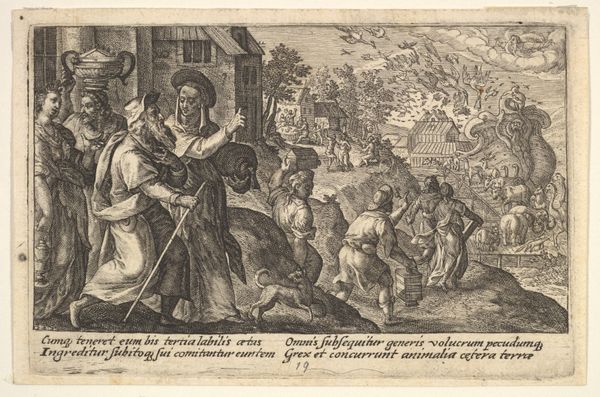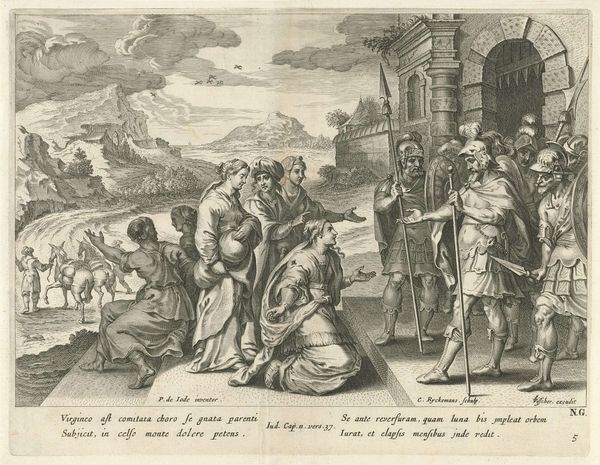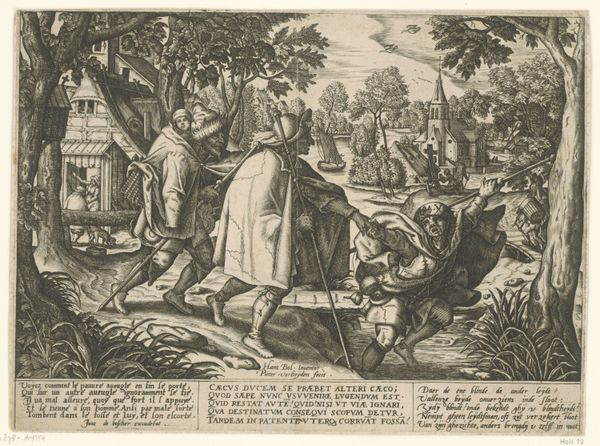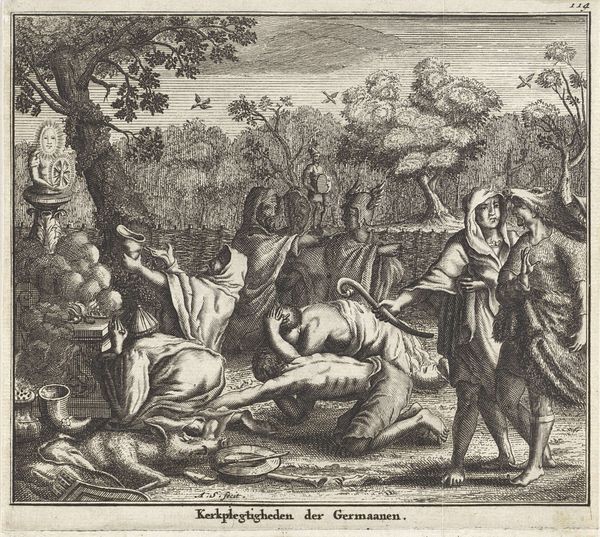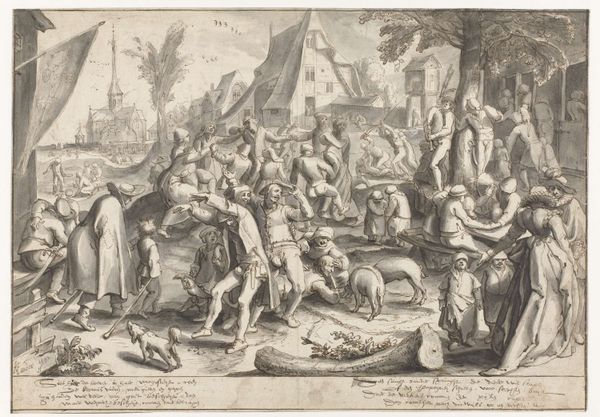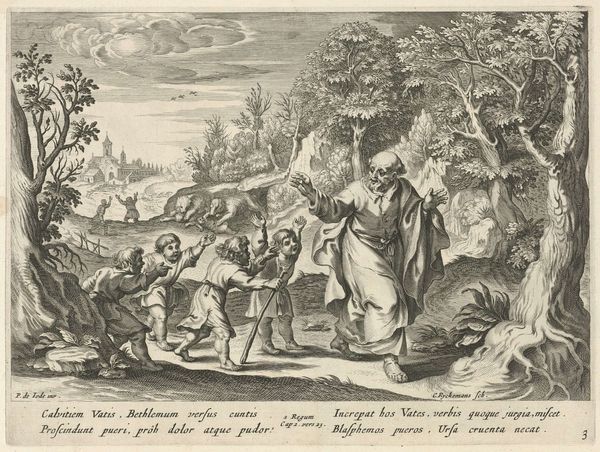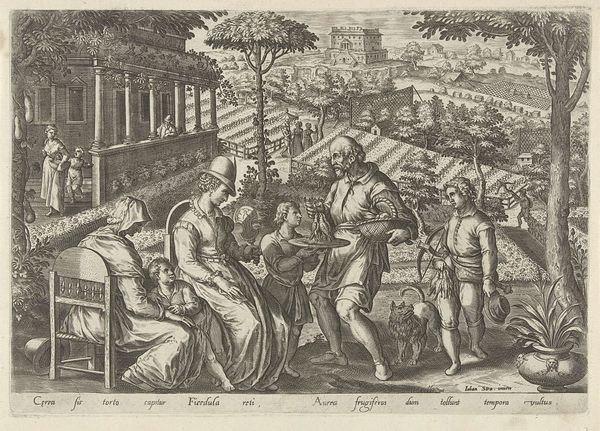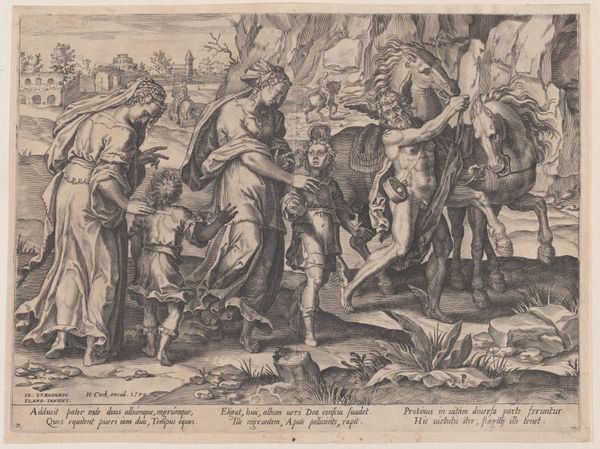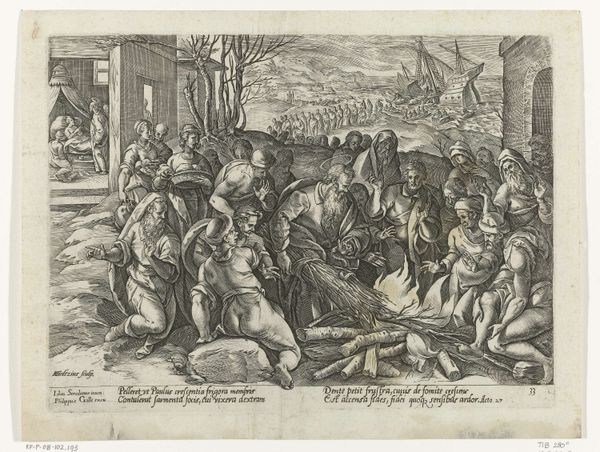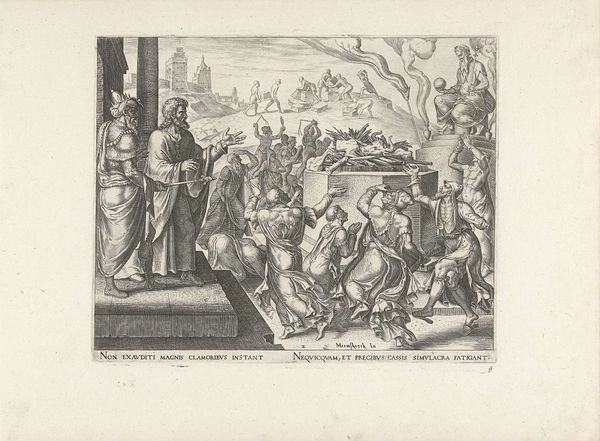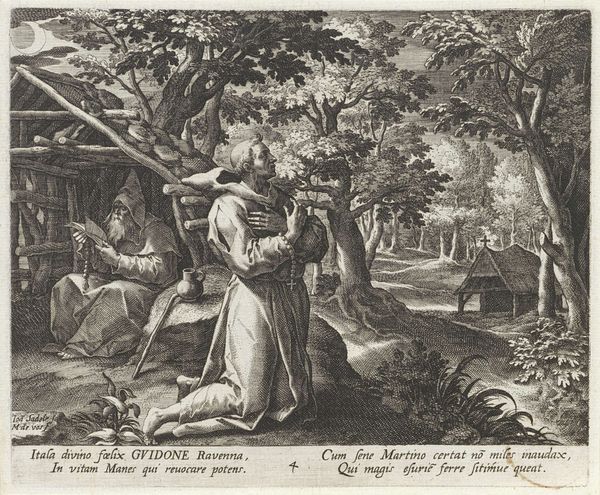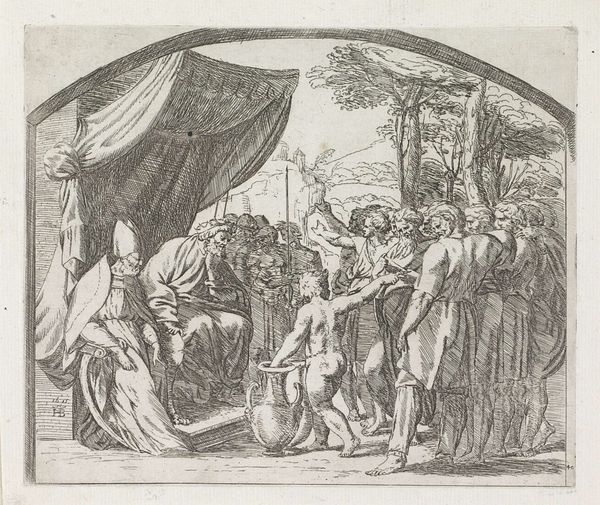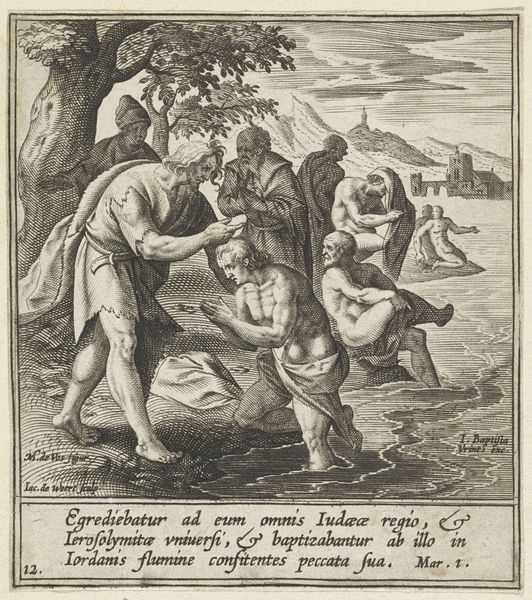
print, engraving
# print
#
mannerism
#
history-painting
#
engraving
Dimensions: height 225 mm, width 270 mm
Copyright: Rijks Museum: Open Domain
Curator: Before us, we have "Petrus in Caesarea," an engraving created before 1585 by Wierix, currently housed in the Rijksmuseum. It's a captivating example of Mannerist style. Editor: My first impression is one of intense energy and swirling movement, even in a still image. There’s something almost theatrical about the composition; the exaggerated gestures, the compressed space—it feels like a scene ripped straight from a dream. Curator: Wierix masterfully weaves together biblical narrative and 16th-century socio-political commentary within this intricate print. The engraving illustrates the biblical episode from the Book of Acts, chapter 10, where the Apostle Peter converts the Roman centurion Cornelius and his household. The event symbolized a significant step towards Christianity's spread to gentiles. Editor: And the figures are so meticulously rendered! Each face, each fold in their clothing seems to tell its own story. But there's also a strangeness to it. The perspective feels skewed, almost as if space is collapsing in on itself. Is it me, or is it a bit claustrophobic? Curator: The composition's density is typical of Mannerism. There is a tension between order and chaos reflecting the anxieties during that time regarding religious conflict and shifting social structures. Wierix was working during the Counter-Reformation in the Spanish Netherlands, and images like this played a key role in promoting Catholic dogma. Note the quotations around the frame. Editor: Knowing that it comes to life in a new way. Suddenly, that tension makes perfect sense. I can almost feel the weight of the message they were trying to get across. And, of course, engravings like this circulated widely, helping spread these visual ideas to new audiences. This really shows the power of imagery! Curator: Indeed. Considering Wierix's role in the religious and political landscape, this piece functions not merely as an illustration but as a tool for shaping beliefs and justifying institutional power. Editor: Makes me think about how artists today navigate similar waters. The conversation is always ongoing. Thanks, this image got me thinking! Curator: It does make you consider, yes. Art as a reflection of its era is so interesting, and something Wierix does particularly well in his prints.
Comments
No comments
Be the first to comment and join the conversation on the ultimate creative platform.
